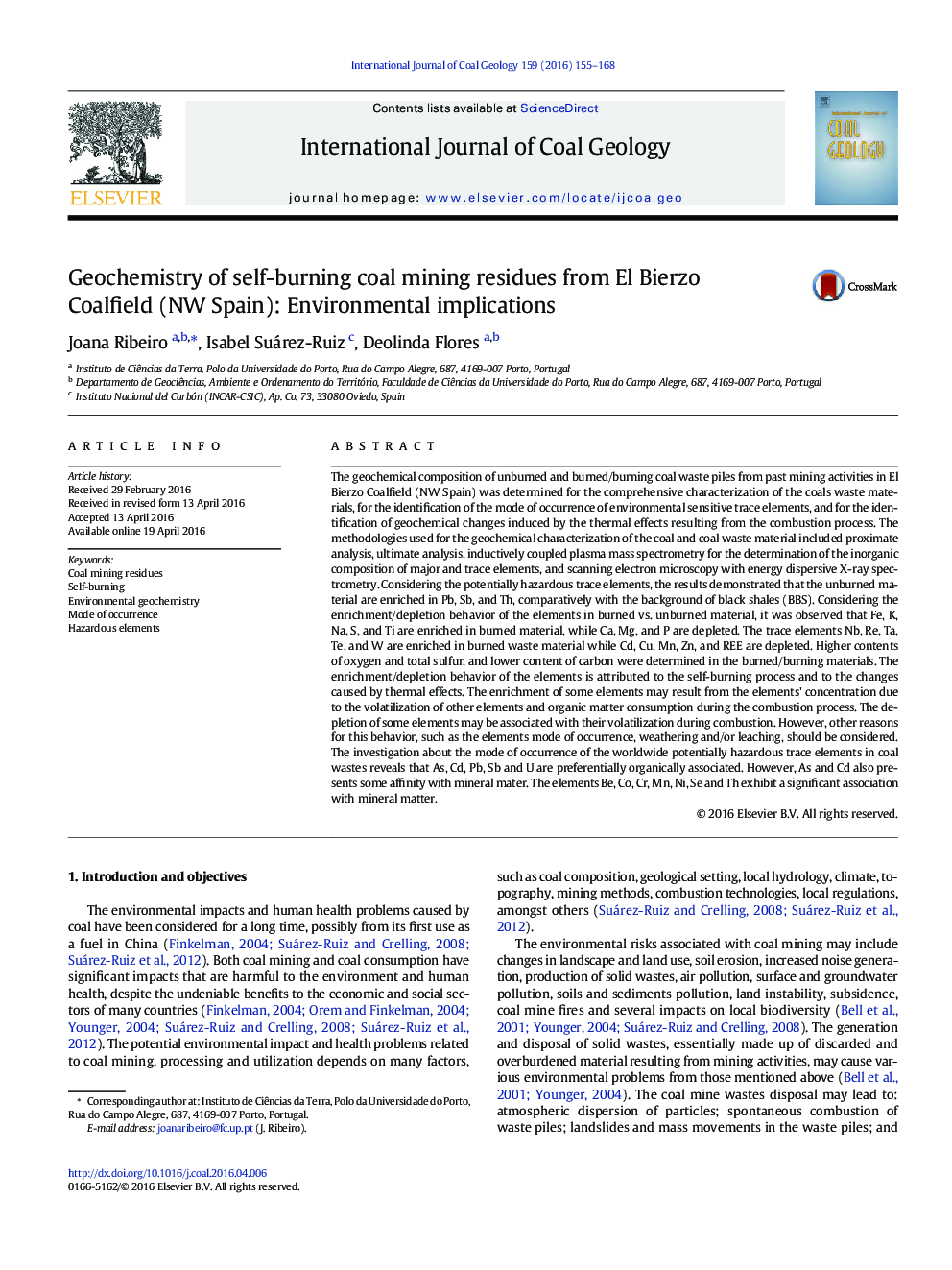| Article ID | Journal | Published Year | Pages | File Type |
|---|---|---|---|---|
| 1752811 | International Journal of Coal Geology | 2016 | 14 Pages |
•Spontaneous combustion of coal mining residues•Geochemical characterization of organic and inorganic fractions of coal mining residues•Identification of elements' mode of occurrence•Characterization of potentially hazardous trace elements
The geochemical composition of unburned and burned/burning coal waste piles from past mining activities in El Bierzo Coalfield (NW Spain) was determined for the comprehensive characterization of the coals waste materials, for the identification of the mode of occurrence of environmental sensitive trace elements, and for the identification of geochemical changes induced by the thermal effects resulting from the combustion process. The methodologies used for the geochemical characterization of the coal and coal waste material included proximate analysis, ultimate analysis, inductively coupled plasma mass spectrometry for the determination of the inorganic composition of major and trace elements, and scanning electron microscopy with energy dispersive X-ray spectrometry. Considering the potentially hazardous trace elements, the results demonstrated that the unburned material are enriched in Pb, Sb, and Th, comparatively with the background of black shales (BBS). Considering the enrichment/depletion behavior of the elements in burned vs. unburned material, it was observed that Fe, K, Na, S, and Ti are enriched in burned material, while Ca, Mg, and P are depleted. The trace elements Nb, Re, Ta, Te, and W are enriched in burned waste material while Cd, Cu, Mn, Zn, and REE are depleted. Higher contents of oxygen and total sulfur, and lower content of carbon were determined in the burned/burning materials. The enrichment/depletion behavior of the elements is attributed to the self-burning process and to the changes caused by thermal effects. The enrichment of some elements may result from the elements' concentration due to the volatilization of other elements and organic matter consumption during the combustion process. The depletion of some elements may be associated with their volatilization during combustion. However, other reasons for this behavior, such as the elements mode of occurrence, weathering and/or leaching, should be considered. The investigation about the mode of occurrence of the worldwide potentially hazardous trace elements in coal wastes reveals that As, Cd, Pb, Sb and U are preferentially organically associated. However, As and Cd also presents some affinity with mineral mater. The elements Be, Co, Cr, Mn, Ni, Se and Th exhibit a significant association with mineral matter.
